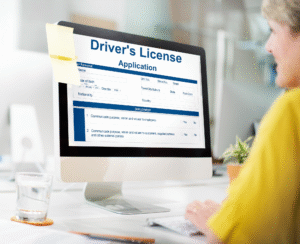
Each one of us depends on transport to ensure that we get all the necessary goods right next to our houses. This is why holding a commercial driving license, or CDL, can help you out if you have a passion for driving. With the increasing demand for professional truck drivers, getting a CDL will surely open up numerous opportunities in the transportation industry.
Who needs a CDL?
A CDL is mandatory for anyone driving or planning to drive a large and complex vehicle, such as a commercial motor vehicle that weighs over 26,000 pounds, transporting hazardous materials, or carrying more than 15 passengers. There are various types of commercial driver’s licenses based on the vehicles you plan to operate.
Different types of commercial driver’s licenses
The commercial driver’s licenses primarily fall into three categories: Class A, Class B, and Class C.
- Class A: It is required for anyone operating any combination of commercial vehicles with a gross combination weight rating (GCWR) of 26,000 pounds or more. This includes tractor-trailers, livestock carriers, tanker trucks, and other similar vehicles.
- Class B: Allows operating a single type of commercial vehicle with a GCWR of 26,000 pounds or more. This includes straight trucks, box trucks, school and city buses, cement mixers, and dump trucks.
- Class C: Is required for vehicles not belonging to Class A or Class B. They can be used to transport passengers or hazardous materials.
How to Upgrade to a Commercial Driver’s License
If you already have a CDL, it is logical to upgrade it to advance in your career or meet job requirements. You might want to move from Class B to Class A or add specific endorsements, but there are some legal steps that you have to follow.
Step 1: Understand Your License Requirements.
To upgrade your CDL, you must first understand the requirements for the upgrade. This will help you know which class of CDL is best suited to your job role. Understanding how the three different categories work and what types of vehicles they permit will help you choose the CDL class that is perfect for you, as well as whether any endorsements may be required.
Step 2: Meet the Eligibility Criteria
There are specific eligibility criteria that you must ensure are met. The first criterion is that you must be at least 21 years old; this requirement applies not only to upgrading but also to obtaining your CDL. You must hold a valid CDL for at least 1 to 2 years. Finally, you must pass a DOT medical examination and receive the corresponding certificate.
Step 3: Get the Commercial Learner’s Permit
A commercial learner’s permit is not only required when applying for a new CDL but also when upgrading your class or adding an endorsement. To obtain a CLP, you will need to start by submitting your application, providing proofs of identity, residence, and legal presence, passing knowledge tests specific to the class or endorsement, and paying the required fee.
Step 4: Behind-the-Wheel Training
The ELDT regulations require drivers upgrading to Class A or B, or adding endorsements such as Hazmat or school bus, to complete training under a provider listed on the Training Provider Registry. The training will include both theoretical and behind-the-wheel components.
Step 5: Pass the Skills Test
Upon completing the training, drivers must pass a CDL skills test. The test will consist of three stages: pre-trip inspection, basic control skills, and a road test. These tests must be taken in a vehicle matching the level of the CDL.
Step 6: Submitting the Application
Finally, after passing the test, you will be required to submit the results, update the license classification, and add the required endorsements. You can then pay the applicable licensing fees. Ensure that you carry documents like the medical examiner’s certificate and proof of residency.

